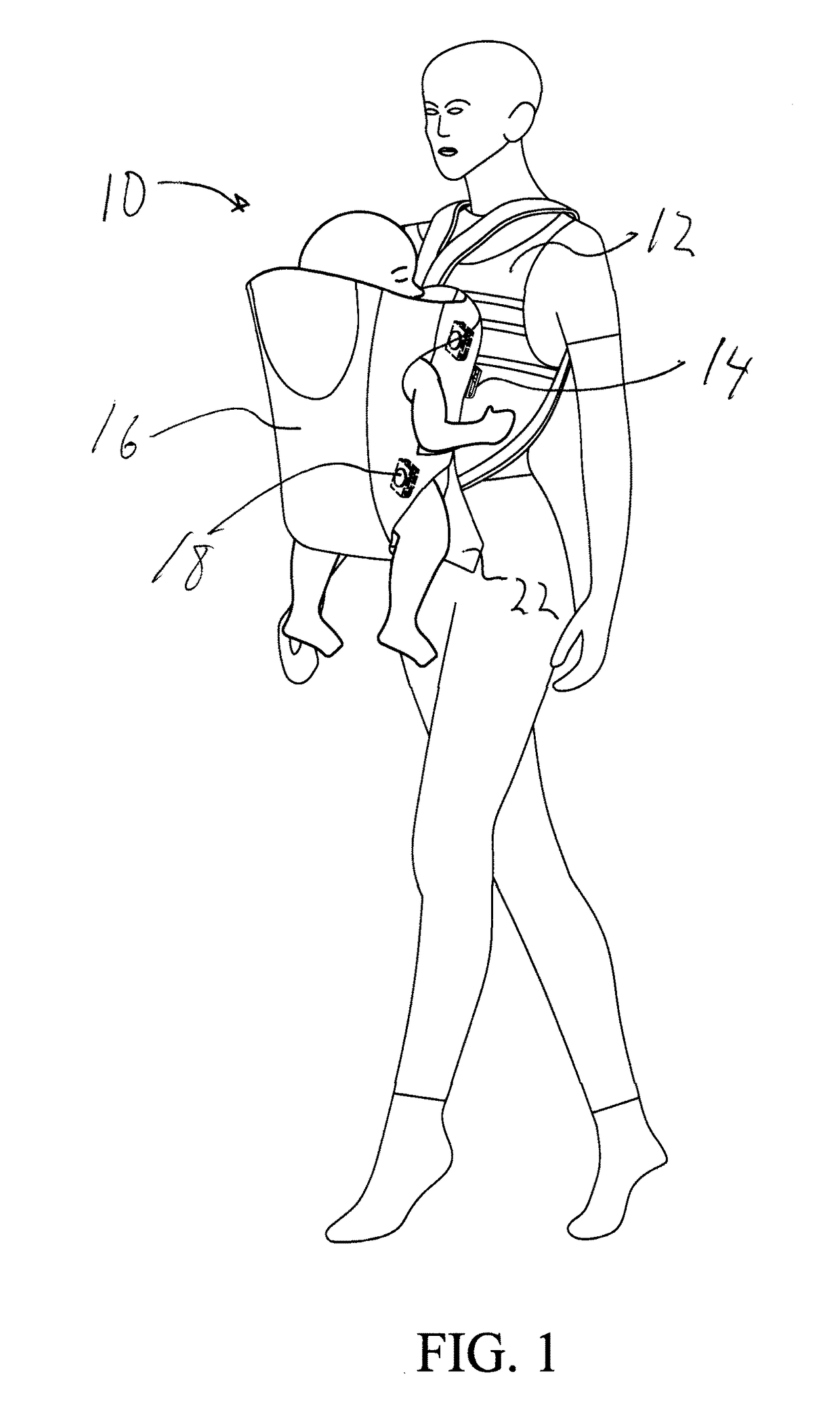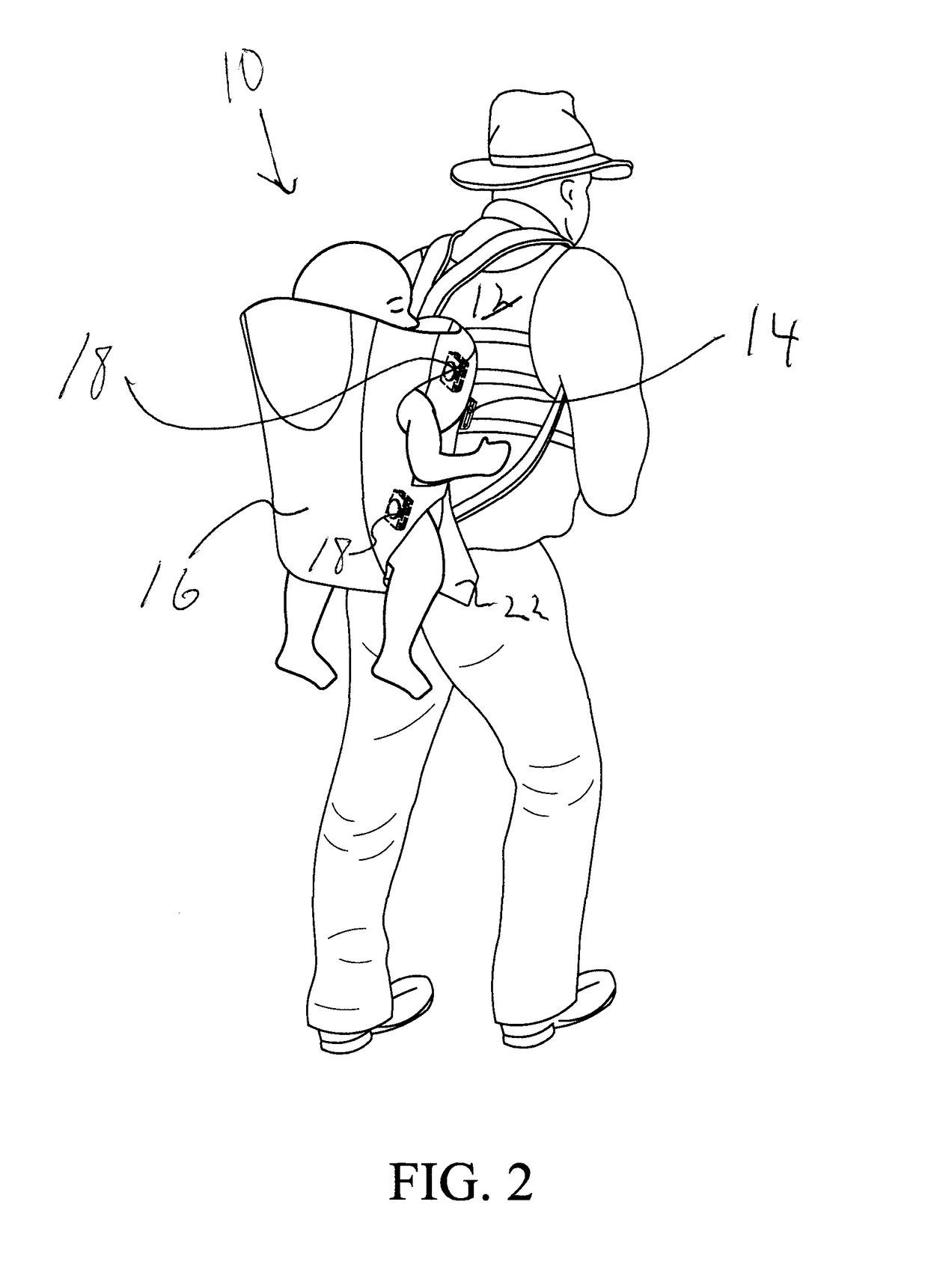Variable position and orientation infant carrier and safety system
a technology of infant carriers and safety systems, applied in the field of infant carriers, can solve the problems of inability to safely care for infants, inability to safely convert known frontal body infant supports, and inability to minimize the effect of each product in minimizing the effect of proximity and position of infants to the carrier, so as to maximize the safety of the carried infant and the flexibility of positioning
- Summary
- Abstract
- Description
- Claims
- Application Information
AI Technical Summary
Benefits of technology
Problems solved by technology
Method used
Image
Examples
Embodiment Construction
[0011]The infant carrying system 10 of the present invention (an embodiment of which is depicted generally in FIG. 1) is based, in part, on the “tactical vest” approach to flexible carrying systems. Such a tactical vest is generally exemplified in U.S. Pat. No. 4,106,121 issued to Belson. As in Belson, the vest 12 of the present invention would include attachment devices or media 14 such as, as applicable, one side's pairing of hook and loop fastening strips, snaps, hooks, carabiners, snap buckle assemblies and the like, each suitable for the weight and durability needed for safely carrying an infant. While the principle function of the vest-side attachment means 14 would be to engage with the infant carrier 16 (as described below, and in the figures), the vest-side attachment means 14 could also be used, or supplemented with additional vest-side attachment means for attaching various accessories, supplies, etc. with corresponding means for reversible engagement with the vest-side a...
PUM
 Login to View More
Login to View More Abstract
Description
Claims
Application Information
 Login to View More
Login to View More - R&D
- Intellectual Property
- Life Sciences
- Materials
- Tech Scout
- Unparalleled Data Quality
- Higher Quality Content
- 60% Fewer Hallucinations
Browse by: Latest US Patents, China's latest patents, Technical Efficacy Thesaurus, Application Domain, Technology Topic, Popular Technical Reports.
© 2025 PatSnap. All rights reserved.Legal|Privacy policy|Modern Slavery Act Transparency Statement|Sitemap|About US| Contact US: help@patsnap.com



